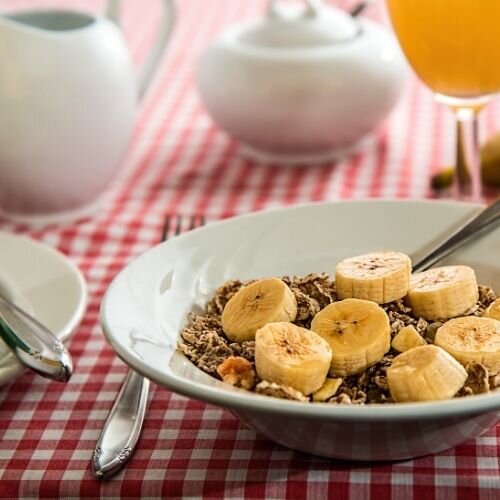Health Benefits of Fiber
How many times to you hear it said from a healthcare professional and on television…eat more fiber. So what are the health benefits of fiber?
Dietary fiber comes from fruits, vegetables, whole grains, and legumes (peanuts, peas, lentils). Most commonly known to maintain good colon health, it also is instrumental in maintaining a good body weight, and reducing the risk from diabetes, heart disease, and some types of cancer.
The body breaks down proteins, fats and carbohydrates and then absorbs them into the system. Fiber, on the other hand, is not digested or absorbed. It passes through the stomach and intestines and out the colon. There are two basic types of fiber, soluble (dissolvable in water) and insoluble (which stays intact). Soluble fiber is found in peas, beans, apples, citrus, oats, etc. and as it forms a gel as it dissolves in water, has been found to lower cholesterol and glucose. Insoluble fiber helps move food through the digestive system and promotes good stool function. Insoluble fiber is found in whole wheat bread and bran, nuts, beans, cauliflower, and potatoes.
There are many ways to incorporate more fiber into your daily routine. Start at breakfast by eating a whole grain or bran based cereal. For bread choose those that list whole wheat or whole wheat flour as the first ingredient. Switch to brown rice, wild rice, or barley. When baking substitute half of the all purpose white flour with a whole grain flour. Add some bran or uncooked oatmeal to muffins, cakes and cookies.
Eat up to five servings a day of fruits and vegetables. Use them as your mid morning snacks. Try a handful of nuts or dried fruit for an afternoon pick me up. Put more beans in your meals. Incorporate a can of kidney beans to a tossed salad. Hooked on nachos? Try whole wheat tortilla chips with black beans and topped with fresh veggies.
Make changes gradually. Increasing fiber too quickly can cause intestinal gas, abdominal bloating and cramping. By a slow and measured increase in fiber will allow your body to adjust easier and promote the natural bacteria to get used to the change.
Stay hydrated. Water will mix with the fiber and make your gut happy with a good digestive system.
There are also supplements available in the market place. However, these over-the-counter products don’t provide the other beneficial nutrients like vitamins and minerals that you find in whole foods. You can experiment with eating foods that have added fiber. These include cerals, yogurt and even ice cream. However, there is usually a significant amount of gas associated with these additives. It is best to check with your family physician before taking supplements like Metamucil or Citrucel.
Processed foods like canned vegetables, pulp-free juices, white breads, etc. are lower in fiber content. The refining process removes the bran which lowers the fiber content. Foods that are labled “enriched” will have some vitamins and iron added back, but do not return the fiber.



